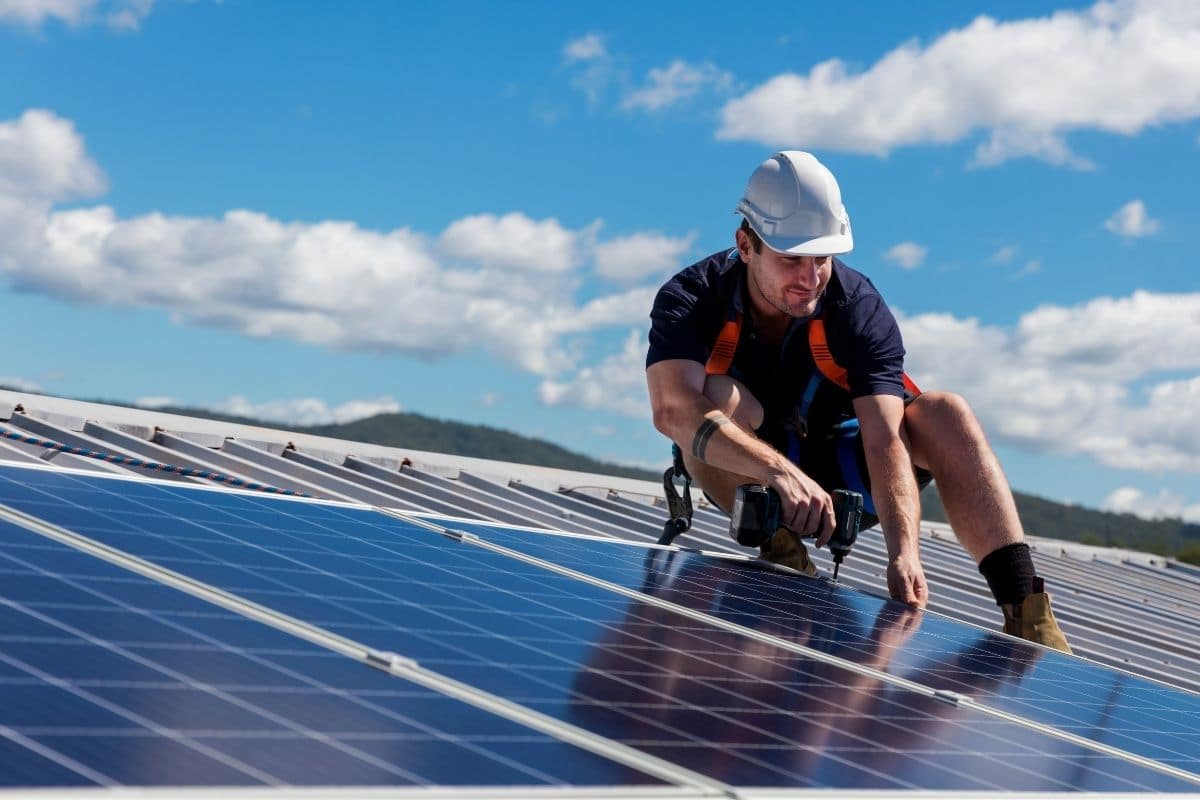
Monocrystalline vs Polycrystalline Which Solar Panel is Right for You
To maximize the production of solar energy in residences and commercial buildings, selecting between monocrystalline and polycrystalline solar panels is an important and prudent option. Your input is crucial as this decision has a direct impact on the cost, efficiency, effectiveness, and output of electricity of the solar power system.
Making an informed decision requires knowing the distinctions between these photovoltaic (PV) systems, as solar panel technology becomes more widely available. This technology offers a clean, renewable energy source, which is essential for lowering greenhouse gas emissions and tackling climate change.
Furthermore, roughly 66% of single-unit homes in the UK had solar panels installed as of 2023. This figure demonstrates the increasing trend of solar adoption for homes.
This improvement highlights the role of people like you who are motivated by the need for financial reductions, environmental advantages, and energy independence.
By 2023, the total solar capacity reached 1.6 terawatts (TW), demonstrating how quickly solar technology is being adopted around the globe. We project that the global solar capacity will reach around 2 TW by the end of 2024, based on the anticipated significant rise in solar installations in 2024.
Between 2023 and 2028, the solar market is expected to almost treble, adding 236 gigawatts of direct current (GWdc) to the 142 GWdc installed base. This increase highlights how vital solar energy is becoming to the world's energy mix and how important monocrystalline and polycrystalline solar panels will be.
The two main varieties of solar panels, monocrystalline and polycrystalline, each having unique properties and uses, will be contrasted in this tutorial. This will assist you in making an application-, cost-, and efficiency-based decision.
Understanding Panels, Both Polycrystalline and Monocrystalline
There are notable differences between monocrystalline and polycrystalline solar panels in terms of material composition, manufacturing process, and efficiency metrics.
In other words, monocrystalline solar panels have higher efficiency and have black-colored cells formed from a single silicon crystal. Conversely, polycrystalline panels often have slightly lower efficiency due to their blue-colored cells, which are made of numerous silicon crystals that have been melted together.
We will examine these factors to assist you in selecting the best solar panel for your needs.
Solar Panels with Monocrystalline Structure
Definition and Production Procedure
The raw material for monocrystalline solar panels is a single, pure silicon crystal. The Czochralski method is used in the manufacturing process, in which a single silicon crystal is formed into an ingot and sliced into wafers to create solar cells.
There are a lot of benefits and drawbacks associated with monocrystalline solar panels for homes thinking about renewable energy options. These highly efficient photovoltaic panels efficiently capture solar radiation, generating clean electricity and lowering carbon emissions.
Their high conversion rate enables the production of the most power possible from the available roof area. Many property owners find their sleek, uniform black appearance to be aesthetically pleasing.
Benefits
Greater Efficiency: Compared to polycrystalline panels, monocrystalline panels have an average efficiency of 15% to 23%. The single-crystal silicon structure, which improves electrical flow and output by allowing electrons to travel more freely, is responsible for this higher performance.
Improved Performance in Low-Light settings: Because of their reduced temperature coefficients, these panels ensure steady energy output even in low-light and overcast settings.
Space Efficiency: These panels are perfect for small places because they use less panels to produce the same amount of power because of their better efficiency.
Aesthetic Appeal: Their all-black appearance is what makes them seem more pleasing to the eye.
Negative aspects
Increased Cost: Monocrystalline panels are more expensive due to their intricate production process; they normally cost between £1 and £1.50 per watt.
Sensitivity to Shading: Performance can be greatly impacted by shading. since even a tiny portion of a panel shaded can cause the output of the entire system to decrease.
Despite their greater initial cost, monocrystalline solar panels provide many advantages for homes considering solar energy options. They are appealing to people looking for long-term value and maximum power production because of their exceptional lifetime, efficiency, and performance under varied settings. On the other hand, users on a tight budget could discover that polycrystalline options work better for them.
Common Applications and Use Cases
In systems that require higher efficiency but have limited space, monocrystalline panels can be used in both residential and commercial settings. Owing to their exceptional low-light capabilities, they are also favored in areas with irregular sunlight.
Solar Panels with Polycrystalline Structure
Definition and Production Procedure
Multiple melted silicon crystals are used to create polycrystalline solar panels. To make solar cells, silicon is put into a mold, allowed to cool, and then cut into wafers. As a result, the panels have blue-colored cells made of molten silicon crystals, which typically have a little lower efficiency.
These panels' overall efficiency is decreased by the greater electron movement resistance caused by their fractured crystal structure. If there is no space restriction in the installation, these panels may still be a cost-effective option.
Multi-crystalline, or polycrystalline, solar panels are widely used in solar energy systems. Simplified approaches are used in manufacturing processes, which minimize waste and cut production costs. It's critical for households thinking about solar energy to comprehend both their benefits and pitfalls.
Common Applications and Use Cases
Installs where budget is more important and space is not a constraint are best suited for polycrystalline panels. Large-scale solar farms and houses with spacious roofs are common places for them.
Variations in Temperature Coefficient
In order to evaluate a panel's performance under various thermal settings, temperature coefficients are essential. The efficiency of monocrystalline solar panels drops less as temperatures rise because they usually have lower temperature coefficients, ranging from -0.3%/C to -0.5%/C.
On the other hand, polycrystalline panels have greater temperature coefficients, often ranging from -0.3% to -1%. This suggests that in hotter climes, there is a greater efficiency loss, which may have an impact on total energy production.

Comments 0